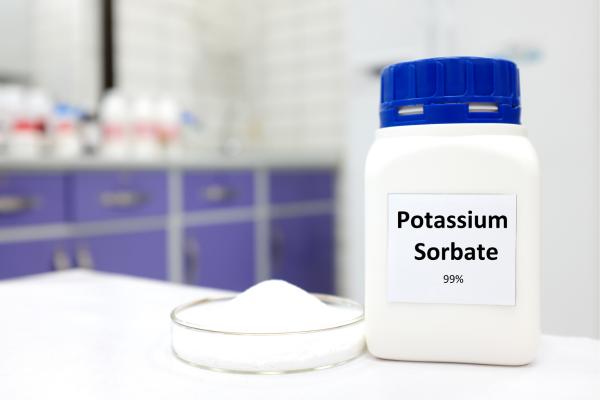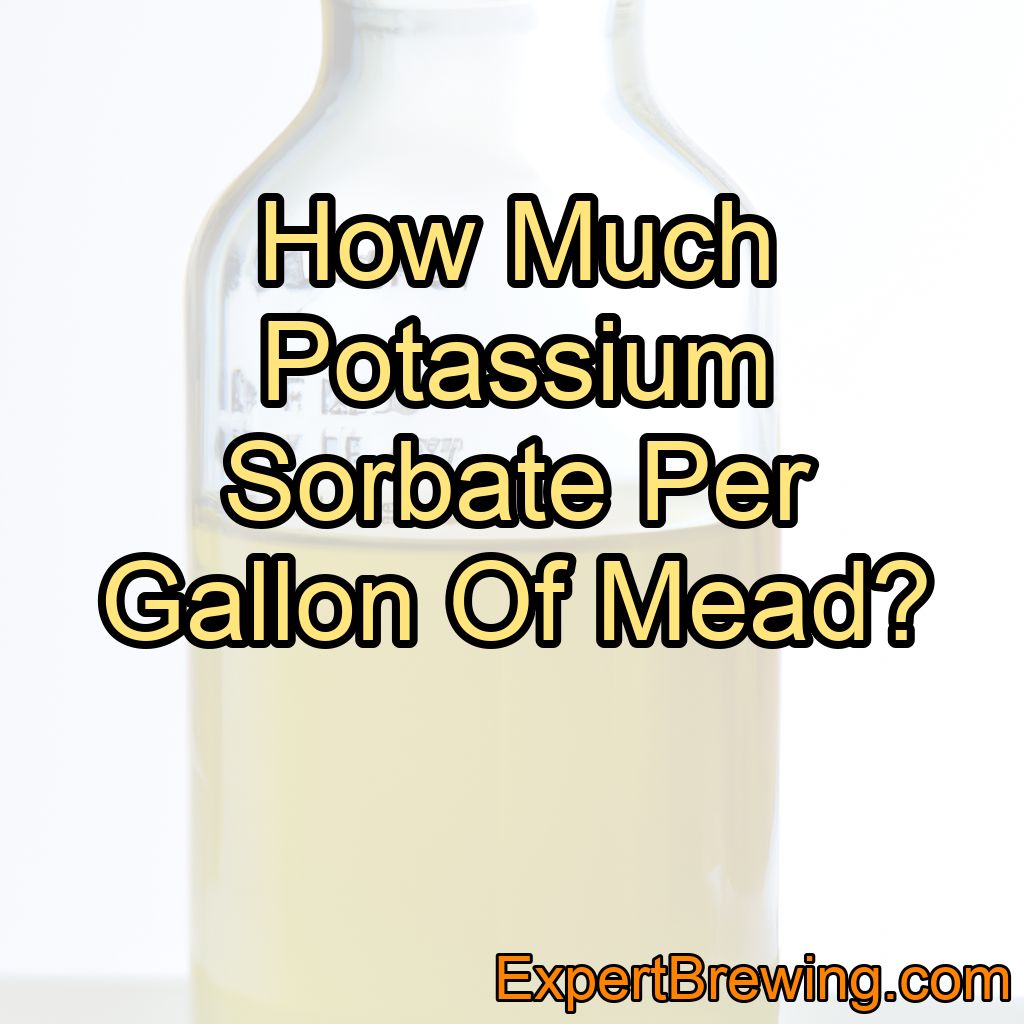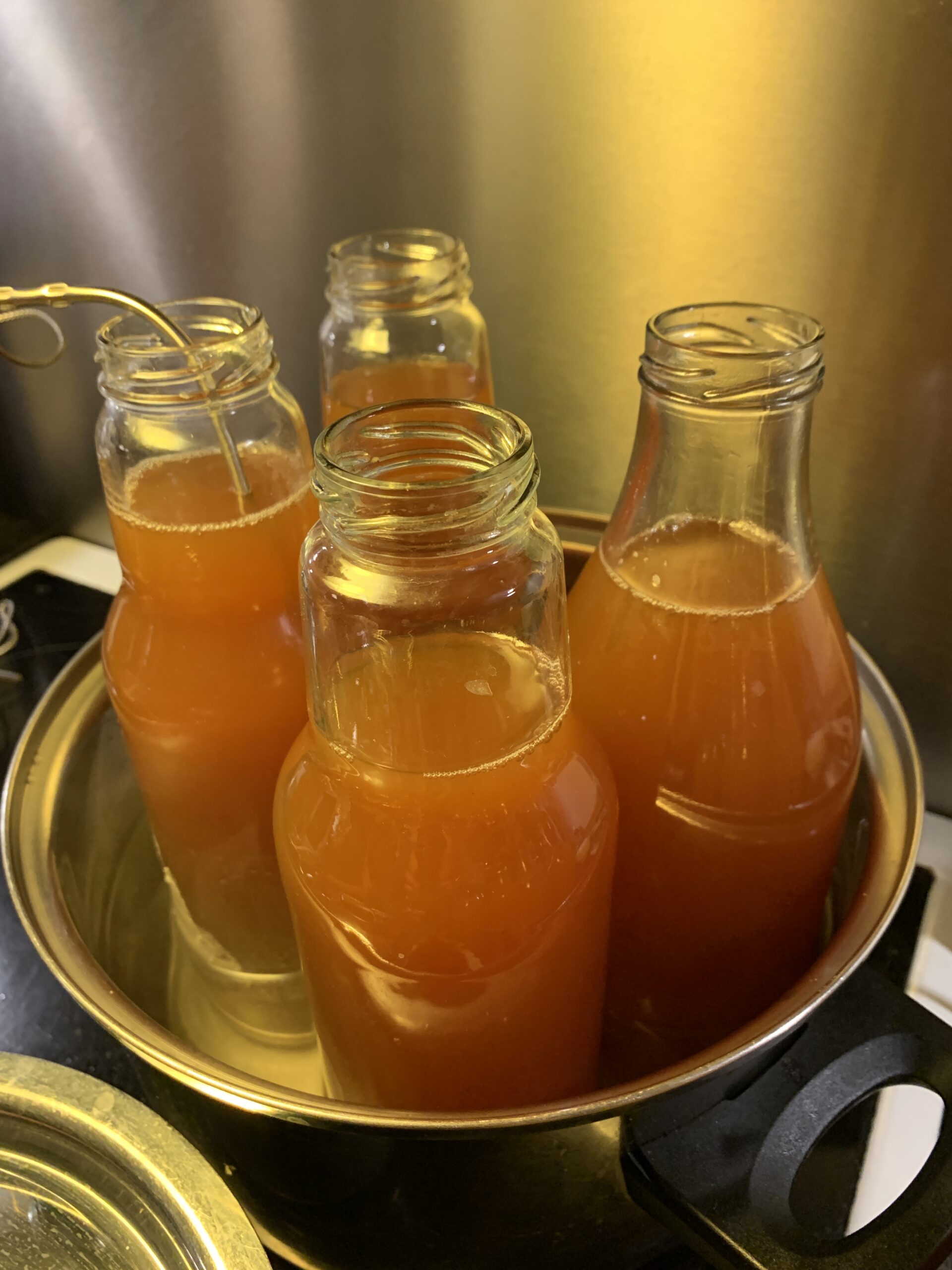When it comes to crafting the perfect batch of mead, there are numerous factors to consider. One crucial aspect is the preservation of your mead’s flavor, aroma, and quality over time.
This is where potassium sorbate comes into play as a popular choice for preventing yeast fermentation and stabilizing the final product.
The recommended dosage is usually around 0.1% to 0.2% of the total volume of mead. This amounts to approximately 3 to 6 ml or 1/2 to one whole teaspoon of potassium sorbate powder.
It’s important to note that potassium sorbate alone cannot stop an active fermentation, so it should be used in conjunction with other stabilizing agents like potassium metabisulfite. Always follow the specific instructions provided by the manufacturer and consider consulting a mead-making expert for precise guidance.
In this blog post, we delve into the science behind potassium sorbate and its role in maintaining your mead’s integrity.
Whether you’re a beginner or a seasoned brewmaster, understanding the right dosage of potassium sorbate is key to achieving the desired balance between taste and shelf life. Join us as we uncover the best practices, considerations, and measurements that contribute to the perfect gallon of stabilized mead. Your next batch could very well be the pinnacle of your mead-making journey!
What is Potassium Sorbate?
Potassium sorbate, a white crystalline powder, is a common preservative used in the food and beverage industry. It inhibits the growth of yeast and molds, thereby preventing further fermentation and spoilage. In mead brewing, it’s used to stabilize the mead by stopping any residual yeast from fermenting.

Why Use Potassium Sorbate in Mead?
One of the key benefits of using potassium sorbate in mead is to control fermentation. Even after the primary fermentation process, there could still be residual yeast and sugars present. If left unchecked, these could continue to ferment and lead to off-flavors or even cause the bottles to explode. To prevent this, we add potassium sorbate to inhibit any further fermentation.
How Much Potassium Sorbate To Use?
The amount of potassium sorbate to use in mead depends on various factors.
However, as a general rule, the recommended amount is 1/2 teaspoon of potassium sorbate per gallon of mead.
This amount effectively inhibits any yeast and prevents further fermentation. However, you should always aim for the least amount possible that still gets the job done. Using too much can leave a noticeable taste in the mead.
Factors Influencing the Amount of Potassium Sorbate to Use
There are several factors that can influence the amount of potassium sorbate you need to use:
The Yeast Strain
Different yeast strains can have different levels of resistance to potassium sorbate. Some strains might require more potassium sorbate to effectively inhibit their growth.
The Amount of Residual Sugar
The more residual sugar in your mead, the more yeast there is likely to be. This means you might need to use more potassium sorbate to prevent further fermentation.
The Alcohol Content
Higher alcohol content can inhibit yeast growth to some extent. This means that meads with a higher alcohol content might require less potassium sorbate.
When to Add Potassium Sorbate?
The best time to add potassium sorbate to your mead is after the primary fermentation has completed. However, it’s crucial to ensure that the fermentation is indeed complete. If you add potassium sorbate too early, it can stress the yeast, leading to off-flavors.
How to Add Potassium Sorbate to Mead?
Adding potassium sorbate to mead is a straightforward process. Simply dissolve the required amount in a small amount of water or mead, then add it to your batch. Make sure to stir it well to distribute it evenly.

Can you add too much Potassium Sorbate?
Yes, you can definitely add too much potassium sorbate to mead or other beverages!
Potassium sorbate is a common preservative used in the food and beverage industry to inhibit the growth of yeast, molds, and other microorganisms. In the context of mead, it is often used to stabilize the product and prevent any residual yeast from fermenting further, which can be particularly important if you’re looking to achieve a specific sweetness level.
However, adding too much potassium sorbate can have negative effects on the quality and taste of your mead. If you exceed the recommended dosage, it might lead to off-flavors, a medicinal taste, or even inhibit the fermentation of future batches.
The exact amount of potassium sorbate that is considered “too much” will depend on various factors, including the volume of mead, the intended sweetness level, and the concentration of potassium sorbate in the product.
It’s essential to follow the manufacturer’s recommended dosage guidelines for potassium sorbate, which are typically based on the volume of the product you’re treating. If you’re unsure about the proper dosage, it’s a good idea to consult with a knowledgeable source or professional in the field of mead-making to ensure that you’re using the correct amount and maintaining the desired quality of your mead.
Using potassium sorbate with metabisulfite (Campden)
Using potassium sorbate and metabisulfite (also known as Campden tablets) are common methods for stabilizing mead and other wines by inhibiting yeast and bacterial growth.
Stabilization is crucial to prevent further fermentation and spoilage after the desired level of sweetness and flavor has been achieved.
Metabisulfite (Campden Tablets): Sodium or potassium metabisulfite is a compound that releases sulfur dioxide (SO2) when dissolved in water. SO2 is a powerful antimicrobial and antioxidant agent.

It helps to prevent oxidation, inhibit microbial growth, and protect the mead’s color and flavor. Campden tablets are often used before fermentation to kill unwanted wild yeast and bacteria, and after fermentation to prevent contamination and stabilize the mead.
Using Both Together: Using potassium sorbate and metabisulfite together can be an effective method for stabilizing mead. However, it’s important to follow the proper dosages and procedures to ensure success.
- Back-Sweetening Method: If you want to stabilize a mead that you’ve sweetened after fermentation, you could add potassium sorbate first to prevent any remaining yeast from fermenting the added sugars. After 24 hours, you can add metabisulfite to further protect the mead from oxidation and microbial spoilage. This combination helps ensure that fermentation won’t restart and spoil the sweetness you’ve added.
- Post-Fermentation Method: If you’re stabilizing a mead that you haven’t sweetened, you can use metabisulfite first to inhibit microbial growth and protect the mead. After that, if you plan to sweeten the mead, you can add potassium sorbate to prevent refermentation when adding additional sugars.
Dosages: Proper dosages are crucial, as using too much of these additives can impact the flavor and quality of the mead. Always follow the manufacturer’s guidelines and recommendations for the specific products you’re using.
Note: While these methods can be effective in stabilizing mead, there’s no absolute guarantee of complete stability, especially over very long periods of time. Oxygen exposure, temperature fluctuations, and other factors can still impact the stability and quality of the mead.
Remember to thoroughly clean and sanitize all equipment before using these additives and closely monitor the mead after stabilization to ensure no unwanted fermentation or spoilage occurs. If you’re unsure about the process, consulting with experienced homebrewers or winemakers can be helpful.
Conclusion
In summary, potassium sorbate is a useful tool for mead brewers looking to control fermentation and stabilize their brews.
The general guideline is to use 1/2 teaspoon per gallon, but this can vary depending on factors like the yeast strain, residual sugar, and alcohol content.
Always add it after fermentation is complete, and be sure to stir it well for even distribution.
Here are 10 quick facts about using potassium sorbate in mead:
1. Potassium sorbate is used to inhibit yeast growth and prevent further fermentation.
2. It’s a common preservative in the food and beverage industry.
3. The general guideline is to use 1/2 teaspoon per gallon of mead.
4. The amount can vary based on factors like yeast strain, residual sugar, and alcohol content.
5. Too much potassium sorbate can leave a noticeable taste in the mead.
6. It should be added after the primary fermentation has completed.
7. Adding it too early can stress the yeast and lead to off-flavors.
8. It needs to be dissolved in a small amount of water or mead before adding.
9. It should be stirred well to distribute it evenly.
10. It’s a crucial tool for controlling fermentation and stabilizing mead.
FAQs
How much potassium sorbate per gallon to stop fermentation?
The recommended amount of potassium sorbate to stop fermentation is typically 0.2-0.3% of the total volume. For example, if you have one gallon of liquid, you would need approximately 2-3 grams of potassium sorbate. It’s important to note that potassium sorbate alone may not completely halt fermentation, and it is often used in combination with other methods such as stabilizing agents or cold temperature.
How long to wait to bottle wine after adding potassium sorbate?
After adding potassium sorbate to wine, it is generally recommended to wait for at least 24 hours before bottling. This waiting period allows the potassium sorbate to fully dissolve and stabilize the wine, preventing any further fermentation or re-fermentation in the bottle.
How much potassium sorbate for 5 gallons of mead?
The recommended amount of potassium sorbate for 5 gallons of mead is typically 1/2 to 3/4 teaspoon. This is used as a stabilizer to prevent any further fermentation and to help preserve the mead.
How long to wait after adding potassium sorbate?
After adding potassium sorbate to a product, it is generally recommended to wait for at least 24 to 48 hours before consuming or using the product. This waiting period allows the potassium sorbate to fully dissolve and integrate into the product, ensuring its effectiveness as a preservative.
How much potassium metabisulfite for 1 gallon of mead?
The recommended amount of potassium metabisulfite for 1 gallon of mead is typically around 1/4 teaspoon. This amount helps to inhibit the growth of unwanted bacteria and preserve the mead. It’s important to note that individual recipes and preferences may vary, so it’s always a good idea to consult a specific recipe or a knowledgeable mead-making resource for precise measurements.
How do you use potassium sorbate for mead?
Potassium sorbate is commonly used in mead production as a preservative to prevent the growth of yeast and bacteria. To use it, dissolve the appropriate amount of potassium sorbate in a small amount of warm water and then add it to your mead during the stabilization process, typically after fermentation has completed.




